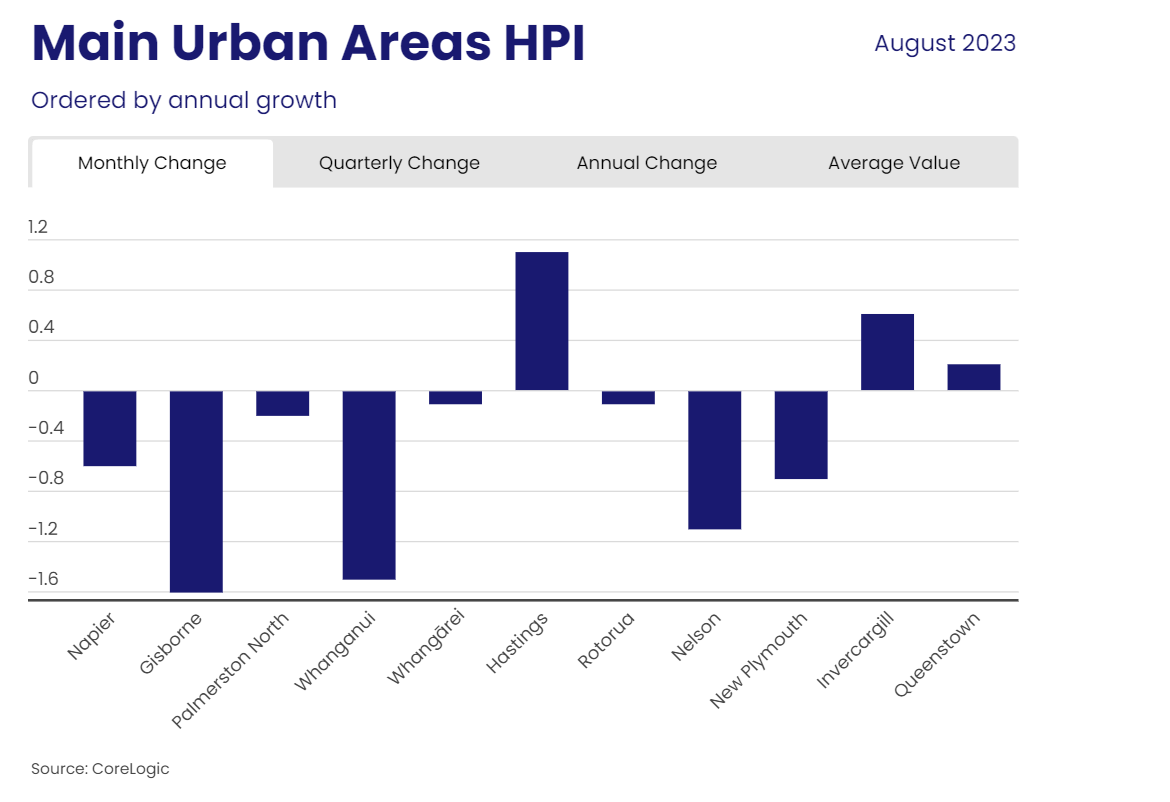Downturn continues to fade as sub-markets record increases

The pace of decline in New Zealand average property values has continued to peter out, with national values slipping just 0.2% lower in August and the three-month change easing to a 1.8% fall, as several key-sub-markets recorded increases, CoreLogic has reported.
The CoreLogic House Price Index (HPI) showed the average property is now worth $905,466, down 13.2%, or -$137,795, from the peak, but is still up 24.3%, or $177,190, compared to March 2020’s pre-COVID figure.
Kelvin Davidson (pictured above), CoreLogic NZ chief property economist, said national average will inevitably flatten out or even starts to rise, with this week’s announcement by the National Party also likely to boost demand if they come into power.
“Although values have continued to edge lower nationally, the floor is likely to be near, with many of the key fundamental drivers now turning around,” Davidson said.
“It’s notable that mortgage rates are likely to now be close to their peak, although further small changes can’t be ruled out as global markets, and hence wholesale financing costs, remain a little jittery.
“On top of that, migration has significantly boosted property demand, and labour markets remain robust. We’re also now starting to see the impact of the loosening in the loan-to-value ratio rules from June first flow through to more low-deposit lending for both owner-occupiers and investors with a 35-40% deposit, who were previously locked out.”
Davidson said there was also a need to consider the possibility of National winning the election, and along with that the implementation of its new housing policies.
“A shorter Brightline Test may drive increased investment purchases, but also some sales by existing investors, given no/reduced liability for capital gains tax,” Davidson said. “And while the phased reinstatement of mortgage interest deductibility could boost sentiment, the hard sums might not be altered too much – many purchases would still make big cashflow losses for a start, because rental yields would still be low and mortgage rates high. Of course, existing investors would pay less tax.
“The softened foreign buyer rules could also boost demand and prices, although probably more so in local markets than across NZ as a whole. In Queenstown, for example, about 10% of properties are valued at $2 million plus, and we know it’s already more popular with foreign buyers, who could potentially exacerbate the shortages of stock at ‘affordable’ prices that already exist.”
He said most main centres reflected the fading downturn at the national level.
“Auckland, Hamilton, Tauranga, and Wellington were all down by only 0.2% or 0.3% in August, and Christchurch actually saw a 0.2% rise in average values,” Davidson said. “Dunedin’s 1.1% drop was an outlier but is much more likely to be a blip than a new, weaker trend.
“Some key parts of previously weak markets are showing signs of renewed property value growth. For example, North Shore and Manukau in Auckland have both recorded two consecutive monthly rises, as have Upper Hutt and Wellington City. These markets aren’t ‘cheap’ by any means, but it would certainly appear that the sharp falls previously seen have brought some buyers back into the fold.”
Following an increase in the average property value across the wider Wellington area in July, the latest figure slightly dropped again, down by -0.3%, due to a -0.4% fall in Porirua and a -1.2% dip in Lower Hutt.
“After the increases in both July and August, average values in Upper Hutt and Wellington City have now edged up by a total of around 0.5% apiece – small in the context of the prior downturn, but of course each cycle has to start somewhere,” Davidson said.
Auckland, too, has seen significant falls in property values during the downturn, but alongside parts of Wellington, is also now seeing signs of a start of the next phase. North Shore and Manukau saw their second consecutive increase in August, both 0.5%, while Franklin recorded a 1.4% lift.
“Auckland property remains pricey, whether you’re a first-home buyer, investor, or relocating owner-occupier,” Davidson said. “But it’s less expensive than it used to be, and this may just be kickstarting a bit of demand in some parts of the super city.”
Outside the main centres, property value trends continued to be a bit patchy last month, as was typically the case at a wider turning point for the market, Davidson said.
Gisborne, Whanganui, and Nelson, for instance, all slipped by at least 1% in their average values in August, with New Plymouth and Napier posting -0.7% and -0.6% drops, respectively.
But Palmerston North, Whangarei, and Rotorua only experienced modest falls, while Queenstown lifted again, Invercargill rose by 0.6%, and the rise in Hastings topped 1%.
Napier, Gisborne, and Palmerston North have all seen double-digit falls in average values over a 12-month horizon, but New Plymouth and Invercargill are down by only 2% to 3%, and Queenstown flat, CoreLogic reported.
Use the comment section below to tell us how you felt about this.



